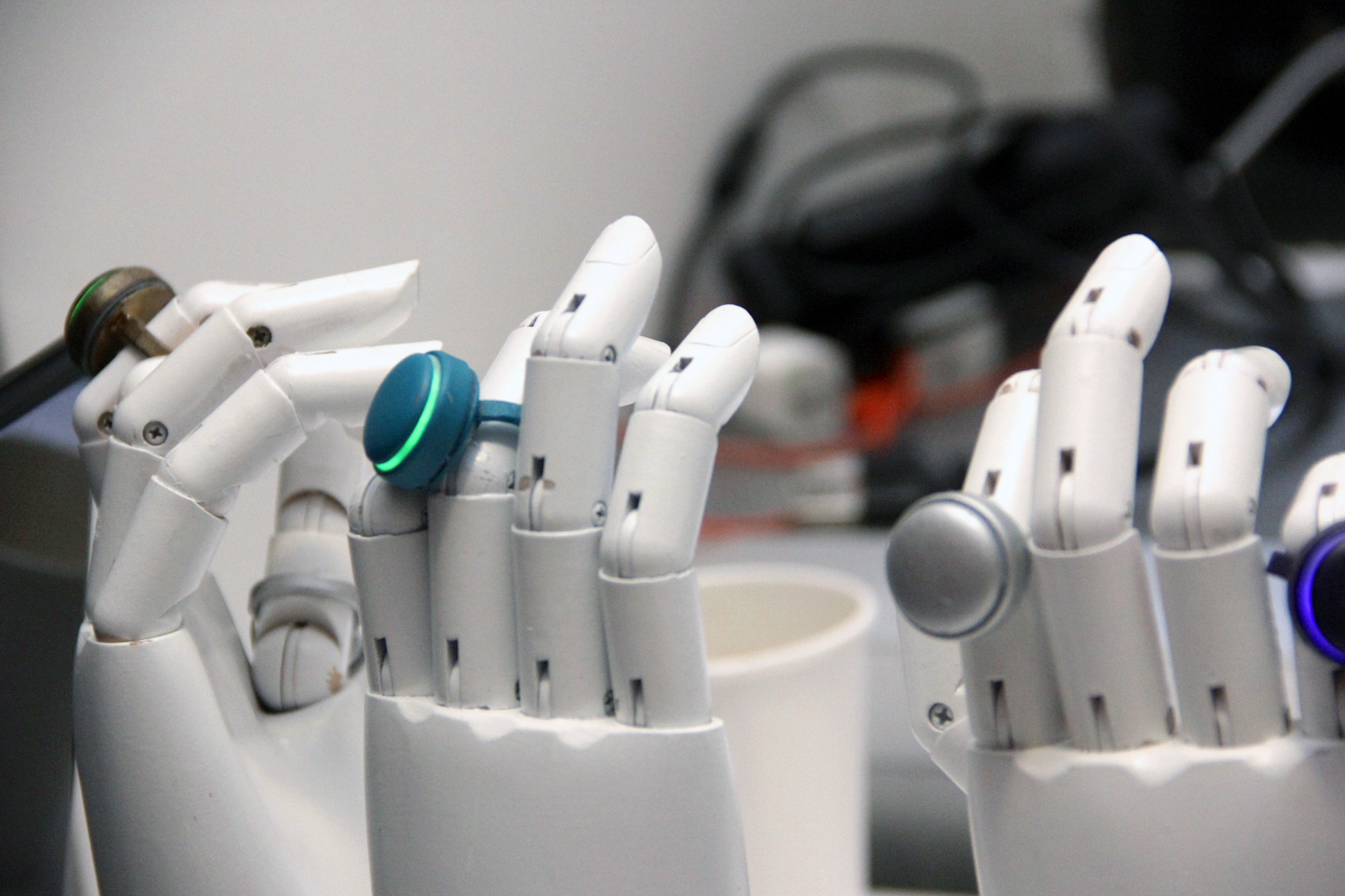Designing on a system level
Andy Goodman on service design, embeddables, and predictive analytics.
 NY Media Center's Mobile Futures event (source: Natalie Holt)
NY Media Center's Mobile Futures event (source: Natalie Holt)
I recently sat down with Andy Goodman, designer and group director of Fjord’s US studios. Goodman has been designing and managing design teams around the globe for the past 20 years. Goodman is a contributor to Designing for Emerging Technologies — our conversation covers embeddables, wearables, and predictive analytics. To kick off the conversation, I asked Goodman to define “service design”:
“It’s well-known that if you ask a service designer to define “service design,” you get 10 different answers. For me, it’s really about thinking on a system level about design … It’s thinking about how systems, and not just computer systems, but how human systems and computer systems and physical systems all interact with each other. You need to be thinking not about individual moments; you need to be thinking about journeys and flows, and thinking about how a human being will naturally, without even thinking about it, move from one context to another using different devices, using physical objects, being in physical spaces. For me, it was very appealing, this idea that you can design more than just interactions in a way, more than just interactions on a screen. You can actually design other things that are more about the way we live and work and play.”
Embeddables and health care
One of the chapters Goodman contributed to Designing for Emerging Technologies is on the topic of embeddables. We talked about some of the more promising applications of embeddables focused on improving health care. Goodman explains what his colleague, a molecular bionicist, is working on that will change medicine delivery:
“His teams are working on these very small delivery mechanisms to send specific drug treatments to the part of the body or brain where they will be effective. He explained to me that the way most drugs work is much like a scatter gun: you take a large quantity of something and it goes around your system in some random way, and some of it will attach to the correct receptors in your brain. The rest of it just washes around your system and probably doesn’t do you any good and may even do you some harm. They’re working on designing very small machines, nanotechnology, that will navigate through your body and deliver a treatment to the specific receptor in your brain.
…
“I think if we’re also thinking outside of the body a little bit, things on the surface of the body, we’re seeing things like skin tops. The idea here is that you can have circuitry that’s on the skin. You can have tattooed circuits that can monitor and send information back into systems. We’ve also seen that in contact lenses. I think Samsung is one of the companies working on it, to detect diabetes from information in the eye. It’s not too far to leap from there because, actually, one of their challenges is how do you power a contact lens. How do you actually get power into a contact lens? That’s one of the issues with embeddables and skin top wearables and all kind of wearables: getting power into a device is a big challenge.”
Predictive analytics and anticipatory design
Data analytics can help predict behavior. Designers need to add data analytics to their skill sets in order to create the next generation of services. Goodman discusses the magical — and sometimes creepy — effect anticipatory design possesses:
“You’re designing for a range of potential outcomes, and those outcomes can be influenced by the behavior of the person in the system. In fact, they should be because whilst you can’t always predict what an individual’s going to do, though that’s becoming easier over time, you can predict what large groups of people are going to do or where the main trends of behavior are going to be. This is what analytics helps us do.”
He discusses Amazon’s approach to anticipatory delivery:
“They don’t know what you as a consumer are going to buy next month, but they know that 10,000 people in the New York area are going to buy a PlayStation. They start shipping in advance of the orders being made. It creates this magical experience where you can get pretty much anything you want, not instantaneously but certainly a lot quicker than you could if it was using a traditional order system, where it would have to take the order, process it, put something on a truck, and send it to you. Now, with anticipatory shopping, which is based purely around analytics and looking at buying trends, they actually put the stuff on the truck before anyone’s ordered it, and it’s just in motion, ready to go.”
And Uber’s expertise in this area:
“Uber’s one of the most interesting companies of the last year. What they do is model entire cities as a system. They really have incredible knowledge about where people go, what their typical movements and habits are, because we’re pretty predictable in our daily lives in terms of moving around the city. It’s actually quite easy to predict. Apparently, their data scientists say they can predict anyone’s movements with about 70% accuracy, which is quite scary when you think about it.”
You can listen to the entire interview on the SoundCloud player below or on our SoundCloud stream.
This interview is part of our ongoing investigations into Experience Design and Business and Experience Design and the Internet of Things.
